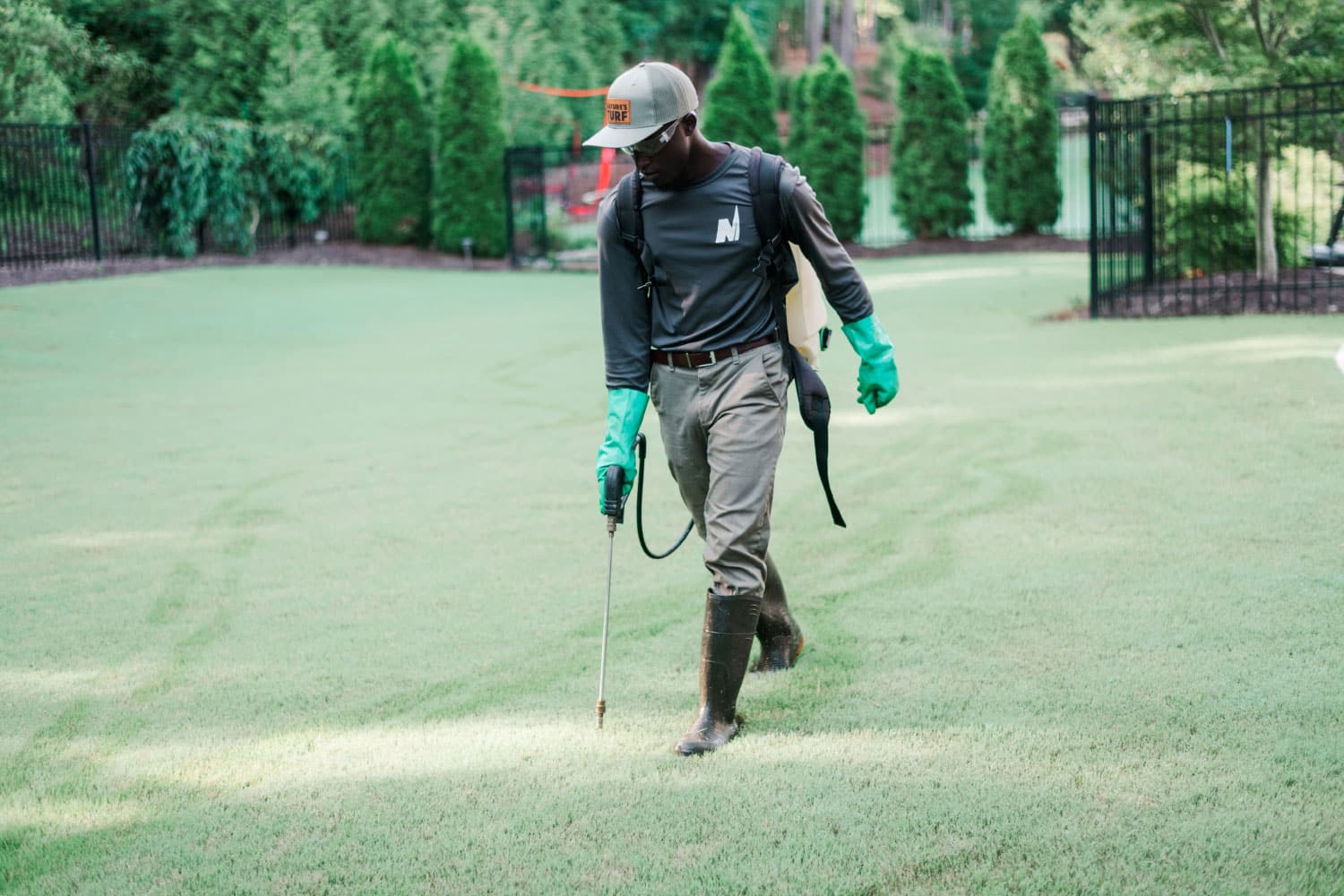Brown patches or spots in your lawn? Turf diseases can be perplexing. One day everything seems fine, but another day passes and there are rings, spots, or blotchy patches of discoloration strewn across your beautiful lawn. Beyond a few outliers, a majority of turf diseases are fungal. Warm, moist conditions conducive to turf growth are similar to conditions required for disease development. Often, infection is only a few rainy days away. Never fear, though. The experts at a professional lawn company such as Nature’s Turf can help. Fungicides are available, and service is just a call away. Let’s talk about the most common diseases and solutions for your particular turf type.
Fescue: Brown Patch
Fescues are cool-season turfgrasses that can be affected by Rhizoctonia solani, commonly referred to as Brown Patch. Atlanta and the metro area are in the transition zone where both warm-season and cool-season turfs can be cultivated, but summers tend to be uncomfortably warm for tall fescue lawns. Hot, humid days slow their growth, and additional moisture breeds perfect conditions for fescue’s most common disease, Brown Patch.
Brown Patch affects the crown and roots of plants, creating a sunken, brown patch of turf that radiates outward. During optimal developmental conditions, a rust-colored smoke ring on the outermost margins of the spots will be present.
Zoysia: Zoysia Patch
Zoysias are warm-season turfgrasses that can be affected by Rhizoctonia solani, commonly referred to as Zoysia Patch. While a zoysia turf is very well-suited for our hot summers, the shorter days of spring and fall tend to be cooler, slowing growth on the way to or from winter dormancy. Slower growth combined with warm, damp weeks in the spring or fall set the stage for the common disease in zoysia.
Rhizoctonia solani is the scientific name of both Brown Patch and Zoysia Patch; the differentiating factor is the type of turf affected by the disease. You read that correctly. The pathogen that is responsible for Zoysia Patch is a permutation of the same pathogen that creates Brown Patch. Symptoms of this fungal disease are very similar to the ones described in fescue. One key difference can be attributed to the growth habits of zoysia. There are often patches of green in the middle of Zoysia Patch spots because of the resiliency of rhizomes and their ability to regenerate growth if Zoysia Patch doesn’t kill them completely.
Bermuda: Dollar Spot
Bermudas are warm-season turfgrasses that can be affected by Sclerotinia homeocarpa, commonly referred to as Dollar Spot. A bermuda lawn is very well-suited for the summer conditions present in Atlanta. They are resilient and tolerant in the face of direct sunlight, high heat, and even drought. Resiliency doesn’t mean immunity, however. They are still prone to stress, and when combined with damp conditions in the spring or summer, bermuda’s most common disease will seemingly show up overnight.
In the case of Dollar Spot, the spots are generally small, roughly the size of a silver dollar. This is where the name originated. If spots coalesce, they may appear larger. Small spider-web like structures present in the morning are the first indicators that Dollar Spot is present. These are mycelium connecting blades of turf. Where the mycelium contacts blades, lesions form, creating bands. Eventually this fungal disease will kill individual blades of grass. Since this is a foliar disease, outside of extreme cases, it likely won’t kill complete plants.
Solutions for Turf Diseases
First and foremost, the best defense against fungal infections is great plant health. Resisting and curing fungal infections requires a combination of best cultural practices and treatments with regard to fertilizing, mowing, and watering your lawn. Conditions are variable, and not every yard is prone in the same way. Make sure to fertilize, mow, and water in ways that encourage plant health and discourage fungal development.
Some yards are more prone than others to fungal diseases. If everything has been done correctly, but disease persists, that’s okay and completely normal. The pathogen and conditions may be persistent enough to require treatment. Here at Nature’s Turf, we have programs tailored for resisting and eliminating fungal disease as well as for each of your lawn-care concerns. For more information and much more, give us a call at 770-461-4156 or shoot us an email at info@naturesturf.com. We’d love to discuss how our programs fit your yard..








